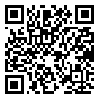Volume 4, Issue 1 (3-2019)
IJREE 2019, 4(1): 1-10 |
Back to browse issues page
Download citation:
BibTeX | RIS | EndNote | Medlars | ProCite | Reference Manager | RefWorks
Send citation to:



BibTeX | RIS | EndNote | Medlars | ProCite | Reference Manager | RefWorks
Send citation to:
Salehi D H, Amiri B. (2019). Impacts of Using Microsoft Word (MS) Software on Iranian EFL Lecturers’ Grammar Knowledge. IJREE. 4(1), doi:10.29252/ijree.4.1.1
URL: http://ijreeonline.com/article-1-117-en.html
URL: http://ijreeonline.com/article-1-117-en.html
English Department, Najafabad Branch, Islamic Azad University, Najafabad, Iran
Abstract: (19155 Views)
The current study was conducted to investigate the effects of using Microsoft Office Word on Iranian EFL lecturers’ grammar knowledge and their attitudes towards using them to support their grammar knowledge. To this end, 14 Iranian EFL lecturers, who had M.A. degrees in TEFL, containing eight males and six females participated in this study. The participants were randomly divided into equal groups of control and experimental. The participants in the experimental group worked with Microsoft Word and the participants in the control group worked with pens and papers during the study. The participants were asked to write a text about a specific subject and express their opinions about that subject. The results were collected and perused by the help of the supervisor of the study who had a Ph.D. degree in TEFL for checking the possible grammatical errors or mistakes. The results indicated that Microsoft Word was indeed beneficial to the grammar of the participants of experimental group because they got significantly higher grammar scores than the participants of the control group did. The results of this study offer practical implications for applying computer for language teaching and improvement of EFL learners’ writing skill.
Type of Study: Research |
References
1. Al-Olimat, S. I., & AbuSeileek, A. F. (2015). Using computer-mediated corrective feedback modes in developing students' writing performance. Teaching English with Technology, 15(3), 3–30. https://files.eric.ed.gov/fulltext/EJ1138425.pdf
2. Atkins, N. E., & Vasu, E. S. (2000). Measuring knowledge of technology usage and stages of concern about computing: A study of middle school teachers. Journal of Technology and Teacher Education, 8(4), 279–302. Retrieved March 13, 2019 from https://www.learntechlib.org/primary/p/8038/
3. Beatty, K. (2010). Teaching & researching: Computer-assisted language learning (2nd Edition). Routledge.
4. Brock, M. N. (1990a). Can the computer tutor? An analysis of a disk-based text analyzer. System, 18(3), 351–359. [DOI:10.1016/0346-251X(90)90008-S]
5. Brock, M. N. (1990b). Customizing a computerized text analyzer for ESL writers: Cost versus gain. CALICO Journal, 8(2), 51–60. https://www.jstor.org/stable/24147836
6. Darus, S., Ismail, K., & Ismail, M. B. M. (2008). Effects of word processing on Arab postgraduate students' essays in EFL. European Journal of Social Sciences, 7(2), 77–91.
7. Fang, Y. (2010). Perceptions of the computer-assisted writing program among EFL college learners. Journal of Educational Technology & Society, 13(3), 246–256. https://eric.ed.gov/?id=EJ899887
8. Gökhan, B., & Kuzucu, O. (2009). Effects of CALL method and Dyned language programme on students' achievement levels and attitudes towards the lesson in English classes. INSTRUCTIONAL TECHNOLOGY, 6(7), 31.
9. Graham, S. (2008). The power of word processing for the student writer. Renaissance Learning, Wisconsin Rapids, WI.
10. Hargrave, C. P., & Hsu, Y. S. (2000). Survey of instructional technology courses for pre-service teachers. Journal of Technology and Teacher Education, 8(4), 303–314. Charlottesville, VA: Society for Information Technology & Teacher Education. Retrieved March 13, 2019 from https://www.learntechlib.org/primary/p/8039/
11. Hewer, S. (2007). CALL methodology: integrating CALL into study programs. Module 2.1", in DAVIES (Ed.), Information and communications technology for language teachers (ICT4LT). Slough, Thames Vally University. Retrieved from http://www. ict4lt. Org/en/en-mod2-1. Htm
12. Levy, M. (1997). CALL: Context and conceptualization. Oxford: Oxford University Press. [DOI:10.1080/0958822970100103]
13. Li, J. (2006). The mediation of technology in ESL writing and its implications for writing assessment. Assessing Writing, 11(1), 5–21. [DOI:10.1016/j.asw.2005.09.001]
14. Li, J., & Cumming, A. (2001). Word processing and second language writing: A longitudinal case study. International Journal of English Studies, 1(2), 127–152. Retrieved from https://revistas.um.es/ijes/article/view/48231
15. Liao, H. C. (2016). Enhancing the grammatical accuracy of EFL writing by using an AWE-assisted process approach. System, 62, 77-92. [DOI:10.1016/j.system.2016.02.007]
16. Milbrath, Y. C. L., & Kinzie, M. B. (2000). Computer technology training for prospective teachers: Computer attitudes and perceived self-efficacy. Journal of Technology and Teacher Education, 8(4), 373–396. Charlottesville, VA: Society for Information Technology & Teacher Education. Retrieved March 13, 2019 from https://www.learntechlib.org/primary/p/8044/
17. Milton, J. (1997). Providing computerized self-access opportunities for the development of writing skills. In P. Benson & P. Voller (Ed.), Autonomy and independence in language learning (pp. 237–248). London: Longman.
18. Mohammadi, N., Gorjian, B., & Alipour, M. (2012). Effects of computer assisted language learning (CALL) approach on EFL learners' descriptive essay writing: the evaluation of computer grammar and spelling checker software. Advances in Digital Multimedia, 1(2), 103–107.
19. Pennington, M. C. (2004). Electronic media in second language writing: An overview of tools and research findings. In S. Fotos and C. M. Browne eds., New perspectives on CALL for second language classrooms. Mahwah, NJ: Lawrence Erlbaum, pp. 69-92.
20. Pilus, Z. (1995). Teachers' interest in CALL and their level of computer literacy: Some implications. ON-CALL, 9(3), 8–11. Retrieved from http://www.cltr.uq.edu.au/oncall/pilus93.html
21. Prvinchandar, S., & Ayub, A. F. M. (2013). Comparison of the effectiveness of StyleWriter and Microsoft Word computer software to improve English writing skills. English Language Teaching, 7(1), 93–102. doi:10.5539/elt.v7n1p93 [DOI:10.5539/elt.v7n1p93]
22. Salehi, H., & Habibi, S. B. (2015). EFL learners' attitudes towards using Thesaurus part of Microsoft Word in vocabulary acquisition. In 1st International Conference on Teaching & Learning (ICTL) (pp. 61–65).
23. Shafaei, A. (2012). Computer assisted learning: A helpful approach in learning English. Frontiers of Language and Teaching, 3, 108–115.
24. Walker, B. (1994). EFL teachers' attitudes about CALL. CÆLL Journal, 5(3), 12–15.
25. Williams, J., & Cui, G. (2005). Teaching writing in second and foreign language classrooms. Cambridge University Press.
Send email to the article author
| Rights and permissions | |
 |
This work is licensed under a Creative Commons Attribution-NonCommercial 4.0 International License. |

This work is licensed under a Creative Commons Attribution-NonCommercial (CC BY-NC 4.0)






